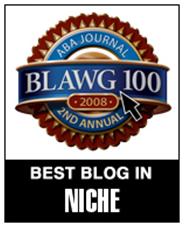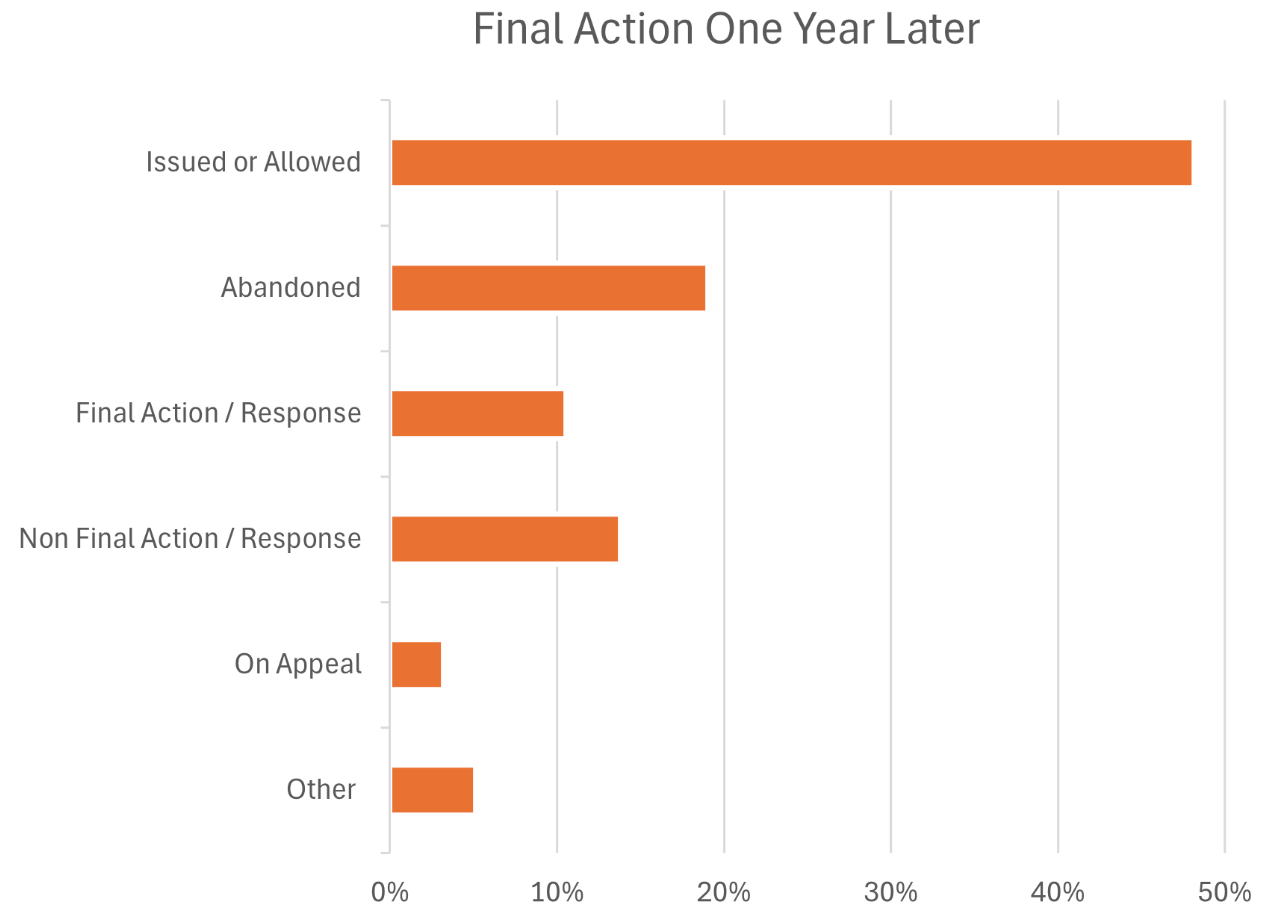Dave Kappos as Next PTO Director?
![]() Although the Obama administration has not directly asked my opinion, I would certainly support David Kappos as the nominee for the next PTO director. Kappos is a longtime IBM patent guru and currently holds the title of VP and Assistant General Counsel in charge of Intellectual Property.
Although the Obama administration has not directly asked my opinion, I would certainly support David Kappos as the nominee for the next PTO director. Kappos is a longtime IBM patent guru and currently holds the title of VP and Assistant General Counsel in charge of Intellectual Property.
Bottom line here is that it will be helpful to have a patent office director who understands patents and who has been fully involved with all aspects of the patent system for the past twenty years. I believe that Kappos will be a careful shepherd of the system - leaving it better off in six years than it is today.
Kappos believes in the underlying value of innovation. In his words, "the whole system of innovation is more important now than ... ever." Beyond that, he is dedicated to a strong patent system and a strong patent office as mechanisms for fostering innovation. Kappos has been ready to try innovative approaches to "catch the intellectual property system up to the twenty first century." However, he has always been clear that his ideas for innovation "should in no way be confused with denigration or devaluing intellectual property." In addition, his years at IBM have taught him the value of consistency and tradition.
Much of the job of PTO director involves employee relations, and Kappos continues to successfully lead one of the largest private patent departments in the world. His current and former employees are loyal to him as a leader and praise his creativity and genius. The IBM IP office is known for its spirited and open debates on policy and direction. In my view, this corporate management experience and patent prosecution experience are more relevant to running the PTO than - say - running litigation teams at a law firm, managing a congressional committee, or even teaching a group of law students. Before moving forward, I want to note here that former Director Todd Dickinson is also an excellent choice, and he continues to be strongly supported by both examiners and other patent law professionals. Dickinson would almost certainly do the better job of healing the growing rift between examiners and applicants.
In his recent testimony to the Senate, Kappos put IBM's support behind the compromise form of the Patent Reform Act. For IBM, it was important that the damages portion of the bill be revised: "we must nevertheless be mindful of the fundamental importance of ensuring that patentees are appropriately compensated or the patent system will fail to provide the incentive innovators require." However, the IBM proposal was that royalties should be based on the "essential features" of a patent. (Quoting Quanta). This proposal is problematic because it would create new-rule uncertainty and also greatly favor holders of large patent portfolios (such as IBM). As director, Kappos should be careful to balance the "right" solution with the need for consistency and stability of rights. IBM also supported the post-grant review system (which I favor) and the venue changes (which I do not favor).
More than his alignment on specific provisions, we can hope that Kappos will bring an important amount of subject matter expertise - helping to ensure that any legislation does not inadvertently disrupt parts of the system that are already working well.
I do have other reservations. Patent pundit Greg Aharonian has oft complained about Kappos and his tendency to talk about patent quality and then charge forward with junky IBM patent applications. Those complaints have merit. The ill defined term 'patent quality' raises red flags in my mind. Here, Kappos has his benign and potentially helpful pet projects of dramatically improving examiner's access (and ease of access) to prior art; improving prior art and patent documents through more standard lexicons; and public collaboration in patent examination (IBM funded the peer to patent program). In the past, Kappos has talked about patent quality as a problem because it leads to a situation where "nobody has an earthly idea of what [a patent] is worth . . . creating a murky and unclear market." These are really proposals to make the prosecution system work more efficiently rather any fundamental changes to patent rights. IBM is good at systems, and Kappos may be as well.
If it is a benefit, it is also a fault that Kappos' blood is saturated with IBM knowledge and culture. Kappos joined IBM in 1983 right out of college (EE / UC Davis) and stayed with the company after law school (Berkeley). At IBM he spent time with the software legal division and also in the Asia/Pacific division. Unfortunately, in the past 25 years, Kappos may have forgotten that most of the world does not operate like IBM. Thus, when he says that "people no longer innovate individually" or that "many new innovations require investments of unprecedented size," I worry that his vision is skewed. Beyond the PTO, IBM has been able to use its large portfolio and market power to build a large licensing pool with very little litigation. Of course, there are few companies in a position to accomplish that result in today's market. It will be important for him to spend time understanding that - in fact - IBM is the atypical market player. On these point, I believe that Kappos will relax his views somewhat once he is no longer the AGC of IBM.
I am excited that Kappos will push the PTO toward a more open system - allowing access to data and information that has been hidden or limited and ready to cooperate on collaborative projects to streamline the system. Kappos has considerable experience with both European and Asian patent systems, and will likely expand cross-border examination collaboration.
On the software side, Kappos will continue to support the idea that software should be patentable - although he argues that patents should at least cover something "technological" and that business methods should be out. Kappos has also spent a lot of time thinking and working with overlapping intellectual property schemes and considering how those interplay with open source software. However, I have not seen any specific proposals.
In the Patently-O reader poll, Kappos earned only 5% of the vote, falling behind Todd Dickinson (36%), Prof Lemley (8%), and "other" (8%).
Other Sources:
- Why Kappos is Unfit
- IP Watchdog on Kappos
- From Greg Aharonian:
- "One rumored candidate to be the next Director of the Patent and Trademark Office is David Kappos, one of the head patent lawyers at IBM. Given IBM's many abuses of the patent system and patent policy over the past few decades, I think it is inappropriate, nay, wrong, for anyone from IBM to be head of the PTO. Might as well as make Bernie Madoff head of the SEC as part of his upcoming jail-time work-release program. IBM patent lawyers for too long have abused the patent system."
- "Case in point. Last week IBM was issued its usual batch of patents, many of which are crap - crappy patents whose sole value is to clog the PTO's patent examination pipelines to the detriment of everyone else. A patent application policy actively embraced by David Kappos. If I was an IBM investor, I would applaud David for doing his best to help IBM. In fact, sometimes I recommend people to buy IBM stock because the company will do anything to maintain its market value. Kudos to David for his efforts in this regard. But the reward for abusing the patent system for the benefit of IBM should be a gold watch at retirement - and should not be the reward of being appointed head of the PTO."
 ABA Top Legal Blogs: For two years in a row, the ABA Journal has chosen Patently-O as one of the top 100 legal blogs. (Only 50 blogs made the cut both years). In addition, Patently-O has been honored in 2008 as the top legal blog focusing on a niche area of law. Thank you to everyone who voted during this process! In time for Patently-O's fifth anniversary in April, I expect that the website will record its ten-millionth visit in addition to the 16,000+ readers who receive their updates via the daily e-mail feed.
ABA Top Legal Blogs: For two years in a row, the ABA Journal has chosen Patently-O as one of the top 100 legal blogs. (Only 50 blogs made the cut both years). In addition, Patently-O has been honored in 2008 as the top legal blog focusing on a niche area of law. Thank you to everyone who voted during this process! In time for Patently-O's fifth anniversary in April, I expect that the website will record its ten-millionth visit in addition to the 16,000+ readers who receive their updates via the daily e-mail feed. SmithKline Beecham v. Apotex (on petition for writ of certiorari)
SmithKline Beecham v. Apotex (on petition for writ of certiorari) of a patent. The drug in question is Paxil, and the case history has more twists than a Hazzard County road. But, the question now before the Court is simple:
of a patent. The drug in question is Paxil, and the case history has more twists than a Hazzard County road. But, the question now before the Court is simple: 